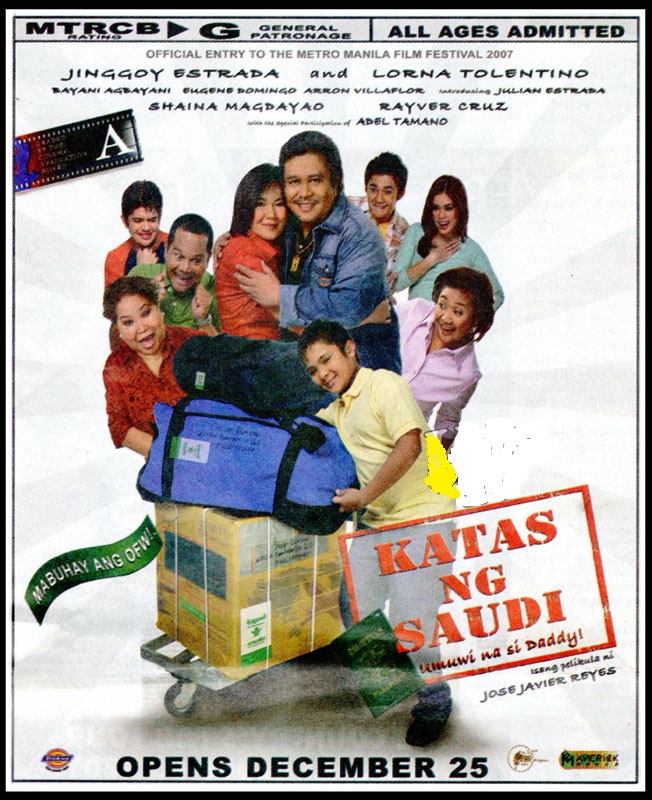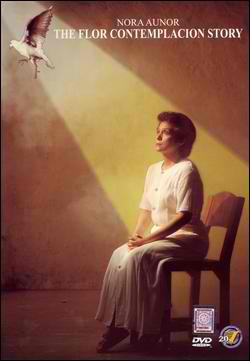Millions of overseas Filipino workers (OFWs) are scattered all across the globe, with high hopes of providing a better life for their families.
Each OFW has a story to tell – some are sweet, others are bitter. Reason why movie producers have turned their real-life struggles into motion pictures, in an attempt to let the world know about their great ordeal and sacrifices.
Here are some of the most critically-acclaimed and classic OFW-inspired films (from most recent to classic) that’ll make you realize what it takes to be an OFW:
1. Nars (2007)

From the title itself, the movie follows the life of five nursing students, Jennylyn Mercado, Jodi Sta. Maria, Agot Isidro, Coco Martin,and Jon Avila, who are at a crossroads in their lives and careers. Their different stories are a cross-section of Filipino nurses, many of whom aspire to work abroad, and in fact one of the most in-demand jobs offers for Filipinos across the globe. Back to the movie, these group of nurses all realize that their dream of pursuing an OFW life is harder than it seems.
Adrinne (Sta. Maria), for example has parents both working overseas. Her mother is a caregiver in Canada while her father works as an engineer in Dubai. Despite the material things her parents provide for her, she feels that they both fail to give her what she truly longs for—their presence. To spite them, she wants to work in Australia to spite her parents, but things will make her realize that being an OFW takes a lot of sacrifice.
2. Katas ng Saudi (2007)

It centers on the story of Oca played by Jinggoy Estrada who works as oil driller in Saudi Arabia. After ten years of working there, he returns to the Philippines only to receive a cold welcome from his family. Then, he realizes that the life of his family in the Philippines is not how he envisioned it to be. His children barely knows him while his siblings have become too dependent on him. This is relatable for OFWs in so many aspects. One of which is the risk of going abroad and missing out on your children’s important life events.
3. The Flor Contemplacion Story (1995)

A true-to-life story, this film tackles the life of the ill-fated Filipina domestic helper in Singapore, Flor Contemplacion. She was accused of killing a fellow Filipina, Delia Maga, and her ward. Since all evidences point to her, the Singaporean government decided to hand down death sentence on her by hanging. This film raked millions from being a blockbuster film, starred by Superstar Nora Aunor.
4. Caregiver (2008)

Sarah Gonzalez (Sharon Cuneta) leaves her job as a school teacher to join thousands of other Filipino caregivers in London. After finishing an arduous course in caregiving, she bids farewell to her students. And in typical Pinoy fashion, she shares tearful goodbyes with her whole family at the airport when she finally leaves for the United Kingdom.
In London, she and her husband Teddy (John Estrada) share a passionate reunion. One day, while taking a stroll at a mall, Sarah meets Sean (Makisig Morales), a spunky Filipino boy, as he tries to shoplift chocolate bars.
Once the fleeting period of excitement is over, she experiences the hard challenges every Filipino caregiver faces every day: cold weather, dirty work and difficult patients. Meanwhile, Teddy also struggles with the daily grind in the hospital where he works. He is pressure to pass the nursing test, which he flanked twice. Sarah faithfully stands by her Teddy. She tries to make the most of the situation by doing her best at work and earns the respect of Mr. Morgan, a wealthy old man. But tension that arises between the couple takes its toll on their marriage. Because of mounting conflict both at work and home, Teddy decides to settle back to the Philippines. Knowing that staying in London is the best thing for their family, she finds it hard to accept his husband’s decision. She’s torn on whether to remain by Teddy’s side to keep her family intact or to find the strength to stay in London to continue seeking a better life for her son, even if it means losing her marriage.
5. Anak (2000)

This film is arguably one of the most, if not the most, iconic movie about OFWs, that it has left its imprints in the popular culture. It highlights the struggles of reconnecting with children after many years of being apart from them.
The story revolves around Josie, played by Vilma Santos, who comes home to the Philippines to start a business and finally be reunited with her family after years of working as a domestic helper abroad. But her efforts have caused a rift between her and her children (Carla, Michael, and Daday) in the Philippines. Her children don’t welcome their mother with open arms. The younger kids, Daday and Michael, are guarded around Josie, and while they eventually mend their relationship with their mother, the oldest, Carla, does nothing to disguise her resentment for what she sees as callous abandonment of her family. Carla openly challenges Josie’s authority, starts dating boys she knows her mother wouldn’t approve of, and begins using drugs, among many things to spite her mother.
6. Dubai

The first Filipino film shot in Dubai, UAE in 2005 became a box office hit in the Philippines, skyrocketing its lead stars, Aga Muhlach, John Lloyd Cruz and Claudine Barretto, further to fame. A month after its Philippine release, it was also screened in the UAE for three days that packed theatres in the former Al Nasr Cinema in Dubai.
It tells us the tales of three OFWs who unexpectedly become connected by friendship and love. The two brothers (Muhlach and Cruz) fall in love with the same woman (Barretto) at the same time. This, in turn, will test the ties between these brothers.
In 2015, Dubai was digitally restored and remastered by ABS CBN to mark its 10th anniversary.
Did you know that before this film was shot it the UAE, acclaimed Filipino scriptwriter Ricky Lee flew with its acclaimed director Rory Quintos to Dubai to research on the lives of OFWs here. “That story of the two brothers, that really happened. Almost the entire film was a composite of everything we gathered in our interviews – all the hardships of those who just moved to the country, Filipinos sleeping under the bridge, etc. We didn’t have to invent stories because it was all right there in front of us, waiting to be told – we just had to listen,” Lee said in a media interview.



